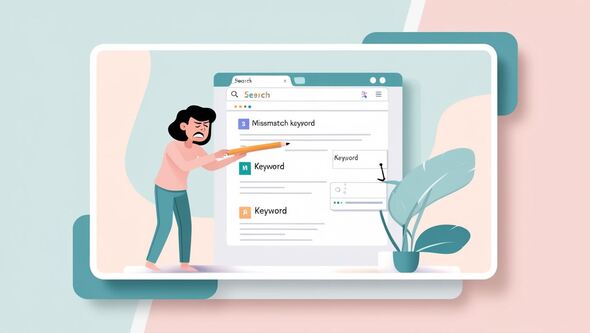Table of Contents
Why Solopreneurs Should Take Charge of Their SEO
Step 1: Understand the Key Metrics That Matter
Step 2: Equip Yourself with DIY-Friendly Tools
Step 3: Identify Common SEO Roadblocks
Step 4: Make Simple Yet Impactful Improvements
Step 5: Save Time with Smart SEO Habits
When it comes to SEO, solopreneurs often feel stuck between two extremes: investing a fortune in expert help or trying to navigate complex analytics alone. But here’s the truth—you don’t need to hire an SEO expert to boost your website’s visibility. For example, a freelance graphic designer increased their website traffic by 200% in just three months by implementing simple SEO strategies. They started by identifying underperforming blog posts using Google Analytics, updated them with fresh content and targeted keywords, and shared these posts on social media to drive engagement. This combination of strategic updates and promotion resulted in a significant boost in both traffic and client inquiries. With the right tools and a few DIY strategies, you can analyze your performance and make impactful improvements, all on your own. Let’s break it down step by step.
Why Solopreneurs Should Take Charge of Their SEO
Search engine optimization isn’t just for big brands or tech experts. For solopreneurs, SEO is a lifeline that can:
- Drive organic traffic without paid ads.
- Help you compete with larger businesses by targeting niche audiences.
- Turn your website into a 24/7 lead generation machine.
This is especially important for solopreneurs managing tight marketing budgets, where every organic click can mean saving money on paid advertising.
The good news? You don’t need a marketing degree or endless resources to start seeing results. All it takes is knowing where to look and what to tweak.
Step 1: Understand the Key Metrics That Matter
Not all SEO metrics are created equal. Focus on these essentials:
- Organic Traffic: The number of visitors who find your site through search engines. Check this in Google Analytics under “Acquisition > All Traffic > Channels.” To improve, analyze which pages attract the most visitors and replicate their structure or topic in new content. For instance, if a blog post on "5 DIY SEO Tips" is driving significant traffic, consider creating related posts like "Advanced DIY SEO Strategies" or turning the original post into a video series.
- Keyword Rankings: Where your site appears for specific search terms. Google Search Console can show you which queries bring the most traffic. Boost rankings by focusing on long-tail keywords and ensuring your content directly answers user intent.
- Bounce Rate: Are visitors leaving quickly? A high bounce rate might mean your content doesn’t match their expectations. Reduce bounce rates by improving your site’s loading speed, using clear CTAs, and ensuring your content matches the promise of your headlines.
- Backlink Profile: Quality backlinks boost your site’s authority. Use free tools like Ubersuggest to monitor who’s linking to you. Reach out to industry blogs or partners for guest posting opportunities to increase backlinks.
- Technical SEO: Things like page speed, mobile usability, and broken links. These impact how search engines crawl and rank your site. Use tools like PageSpeed Insights and Screaming Frog to identify and fix issues, ensuring a smooth user experience.
Step 2: Equip Yourself with DIY-Friendly Tools
Here’s a shortlist of free or affordable tools that make SEO analysis manageable for anyone:
| Tool | Pros | Cons |
|---|---|---|
| Google Search Console | Free and excellent for keyword tracking and fixing indexing issues. | Limited insights on backlinks and no keyword suggestions. |
| Google Analytics | Comprehensive traffic data and audience behavior insights. | Steep learning curve; requires setup and customization to extract actionable insights. |
| Ubersuggest | Affordable; offers keyword research, competitor analysis, and backlink tracking. | Data depth may not match premium tools like Ahrefs or SEMrush. |
| PageSpeed Insights | Free; focuses on improving page speed and user experience. | Limited to technical performance and doesn’t cover content or keyword optimization. |
| Screaming Frog | Free version allows crawling of up to 500 URLs; great for identifying broken links and errors. | The free version has limitations, and advanced features require a paid license. |
| goalskeeper.io | Affordable, beginner-friendly dashboards for tracking performance across multiple channels. | Lacks advanced features found in expensive, enterprise-grade SEO tools. |
Step 3: Identify Common SEO Roadblocks
Before you can improve, you need to know what’s holding your site back. Start by asking these questions:
- Are my pages optimized for mobile users? (Hint: Use Google’s Mobile-Friendly Test.)
- Do I have slow-loading pages? (PageSpeed Insights can pinpoint the culprits.)
- Are there broken links or missing meta descriptions?
- Is my content engaging and relevant to my audience?
Once you’ve identified problem areas, tackle them one by one. Small, consistent fixes can lead to big results over time.
Step 4: Make Simple Yet Impactful Improvements
Here’s where the magic happens. Use these actionable tips to boost your SEO:
- Refresh Old Content: Update blog posts with new data, internal links, and optimized images.
- Target Long-Tail Keywords: These niche phrases are less competitive and more likely to attract your ideal audience.
- Fix Technical Issues: Repair broken links and improve page load speeds.
- Leverage Local SEO: If you serve a specific area, optimize your Google Business Profile and include location-based keywords.
- Build Backlinks: Reach out to other solopreneurs for guest posting opportunities or resource link exchanges.
Step 5: Save Time with Smart SEO Habits
As a solopreneur, time is your most valuable asset. Streamline your efforts with these habits:
- Set up automated reports in Google Analytics to track key metrics monthly.
- Use templates for tasks like keyword research or content updates.
- Allocate an hour a week to review performance and plan improvements.
SEO isn’t a one-and-done task. Regular maintenance ensures you’re always one step ahead of the competition. In fact, websites that consistently update and optimize their content see up to 126% more traffic than those that don’t. Small, consistent efforts can yield significant long-term results.
❓FAQ: DIY SEO Analysis & Performance Improvement
I’m seeing impressions but not clicks — what should I do?
This usually means your pages are showing up in search results, but the titles or descriptions aren’t compelling enough. Improve your meta titles and descriptions to better match search intent and attract clicks.
Which metrics matter most when evaluating SEO performance?
Focus on impressions, clicks, CTR (click-through rate), average position, and traffic by page. These reveal how visible your content is and whether people are engaging with it.
How do I know which content to improve first?
Look at pages with high impressions but low CTR, or pages that rank on page 2 or 3 of search results. These pages are close to performing well and may benefit most from small updates.
What if my rankings drop after I make changes?
That can happen temporarily. Google often re-evaluates pages after updates. Give it 1–2 weeks to settle. If performance doesn’t improve, reassess your keywords and content relevance.
Can I do this analysis without technical skills?
Yes. With tools like Google Search Console and goalskeeper.io, you can spot patterns and take action without needing to know code or advanced analytics.
How often should I analyze my SEO data?
Check monthly at minimum. For active sites or during campaigns, review weekly to spot early trends and react faster.
Ready to Take Control of Your SEO?
SEO doesn’t have to be overwhelming or expensive. With the right tools and a clear plan, you can optimize your website, attract more visitors, and grow your business—all without hiring an expert.
Start small. Pick one tool, track one metric, or tackle one improvement this week. Over time, these small wins will add up to big results. And if you’re looking for a simpler way to monitor and improve your marketing, check out goalskeeper.io for tools that make analytics easy for solopreneurs like you.
Read to next step?
Achieve Digital Marketing Success
Effortless Digital Marketing Analytics with goalskeeper.io
Start Free Trial





